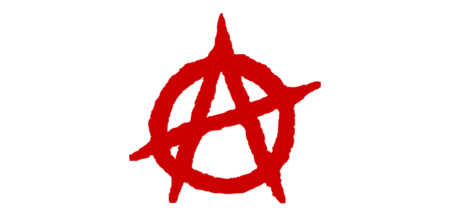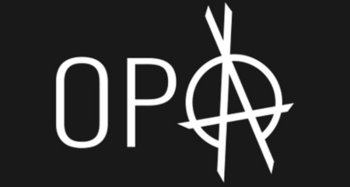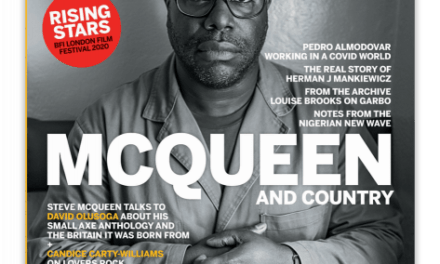Science fiction epic The Expanse created by Mark Fergus and Hawk Ostby and based on the novels by Daniel Abraham and Ty Franck has recently debuted its sixth and final season on Amazon Prime. Despite a tumultuous production run, initially being cancelled by SyFy and then picked up by Amazon, The Expanse has delivered an intense and deeply entwined narrative which broadly centres on the political relationships between Earth, a colonised and militarised Mars and the nascent Outer Planetary Alliance (OPA) which consists of off-worlders termed ‘Belters’ for their being born in the asteroid belt between Mars and Jupiter.
The OPA was introduced in the first season of the show as a factional organisation under the influence of several leaders who held considerable sway and markedly different views on how the Belters might liberate themselves from control of the ‘Inners’ (Earthers and Martians). Anderson Dawes (Jared Harris) who endorses violent acts of terrorism in the struggle for liberation, and former EarthCorp commander Fred Johnson (Chad L. Coleman) who seeks peace via mediation. However, in the later series a dangerous new force emerges to usurp them: terrorist Marco Inaros (Keon Alexander) attempts to liberate the Belters by sparking a military conflict with his ‘Free Navy’, formed from the ships of former OPA faction leaders, including lead character Camina Drummer (Cara Gee), Johnson and OPA Commander Klaes Ashford (David Strathairn).
What struck me upon watching the fifth season for the first time, noting that I consider myself a fan of this incredible space opera, was that Inaros’ speech claiming responsibility for his acts of terror, is given with the backdrop of what looks like the anarchist symbol.
And as someone who has been reading a lot about anarchist philosophy and activism over the past few years, I’m moved to ask: are the OPA, or perhaps in this case specifically Inaros’ Free Navy, anarchists?

Fig. 2: … and the backdrop of Inaros’ speech claiming responsibility for terrorist atrocities in ‘Guagamela‘ (S05E04 of The Expanse).
Ostensibly there are really two questions at stake here:
- In the fictional world of The Expanse television series, can audiences read either the OPA or Inaros’ Free Navy as ‘anarchists’?
- Are the writers and producers of the show invoking the anarchist symbol without much recourse in considering the political implications of such representation (as is done quite regularly on film and television – think Bond villains who are quite often referred to as anarchists)?
Starting with the first question then, let’s look at this definition of anarchism from Rudolph Rockers:
‘[not] a fixed, self-enclosed social system but rather a definite trend in the historic development of mankind, which, in contrast with the intellectual guardianship of all clerical and governmental institutions, strives for the free unhindered unfolding of all the individual and social forces in life.’ (in Chomsky, On Anarchism, 2013: 10)
Given the definition above, it could be argued that The OPA are indeed anarchists, seeking freedom of their people from the domination of the Inners who routinely subjugate the Belters socially, politically and literally in terms of abusive labour relations (the Belt is the main source of water for the other planets – mined under dangerous conditions by Belter workers). As noted above, the OPA leadership had frequent disagreements about appropriate methods in the struggle for liberation but this is inherently anarchist; thinking about the land collectivisation scene in Ken Loach’s Land and Freedom (1995) it’s crucial that each individual feels they have some agency and stake in the conflict at hand and potential resolutions. Under Dawes and Johnson, with other leaders like Drummer and Ashford emerging, this level of individual agency is respected.
https://youtube.com/watch?v=-B3JChcOIQI
However, by the time of Inaros’ Free Navy, the remnants of the OPA have rallied around a cause centered on violent acts of terrorism, in this case the firing of stealth asteroids at planet Earth, causing apocalypse level events. As depicted in the series’ plotline about Drummer’s crew, this continued to cause a genuine split in the anarchist Belters. 19th Century anarchists were also involved deeply in discussions of this ilk, with Ruth Kinna noting
‘The incidence of violence and the negative public reactions it generated towards anarchists focused anarchist attention on their principles: how well was anarchist education advanced through violence? To what degree did any form of activism render anarchists vulnerable to state repression?’ (The Government of No One, 2019: 85)
Clearly the earlier factionalism of The OPA, including their formalisation as a legitimate organisation in season three (see below) reflects a level of critical engagement in how Belter’s might be liberated. However, it is clear that the time for debate is over as Inaros’ terror is unleashed on the populations of Earth and Mars.
Which brings us to the second question – to what extent are the writers and producers of The Expanse deliberately invoking anarchism in the narrative of the series? As ever, the answer to this seems quite complicated, with a whole Reddit thread dedicated to why the OPA logo is different in the show than it is described in the books.
Evolution of The OPA flag, from book to screen

Fig. 3: The OPA flag as described by the book series and designed for the official role-playing game.

Fig. 5: The OPA flag from season three of The Expanse onwards, as the faction became a formalised ‘navy’ under a fragile partnership between Dawes and Johnson, with new leaders in the form of Drummer and Ashford.
As you can see from the images above, there was certainly a concerted effort by the production team to reflect anarchism in the original flag for The OPA, noting that the use was discontinued as the factions sought legitimacy. However, this begs the question as to why the anarchist symbol makes such a prominent return during Inaros’ terrorist attack, especially when the representation of the flag for this new faction bears no resemblance to that symbol, or any earlier OPA flags.
It is possible to conclude that the writers and producers of The Expanse were reflecting real historical situations by incorporating the anarchist symbol into The OPA flag in the early seasons of the show. After all, the various factions of Belters seeking liberation from oppression, coupled with the frequent disagreements among them as to appropriate tactics, represent a very real analogy to many anarchist struggles (even some which continue today). However, the reappearance of this symbol during the events of season five is a less critical inclusion, making the mistake that multiple other film and television texts have over the years and making anarchism synonymous with acts of terror.
Chris Nunn is currently Programme Leader for the BA Film and Television Production at the University of Greenwich. As the former Festival Director of Screentest: The UK’s National Student Film Festival, Chris has been championing aspiring filmmaking talent for nearly a decade. Passionate about filmmaking education, he has recently completed his PhD entitled Towards a New Film Pedagogy: Recrafting Undergraduate Filmmaking Education for an Expanded Field (2019) and plans to continue and broaden research in this area. Aside from education, Chris’s research interests include science fiction television, mockumentary and the effects these evolving forms have on contemporary audiences.
In 2021 Chris became co-convenor of ‘Film/making Pedagogy’ a new ‘Special Interest Group’ as part of the British Association of Film, Television and Screen Studies (BAFTSS). He is also currently Associate Editor of the Film Education Journal. He is currently writing up a research bid on class, creativity and talent in film and television industries, as well as a book proposal on anarchism.
References
Chomsky, N., 2013. On Anarchism, London: Penguin.
Kinna, R., 2019. The Government of No One, London: Pelican Books.
Land and Freedom. 1995. [Film] Directed by Ken Loach. UK
The Expanse. 2015-2021. [Film] Directed by Mark Fergus, Hawk Ostby. USA






